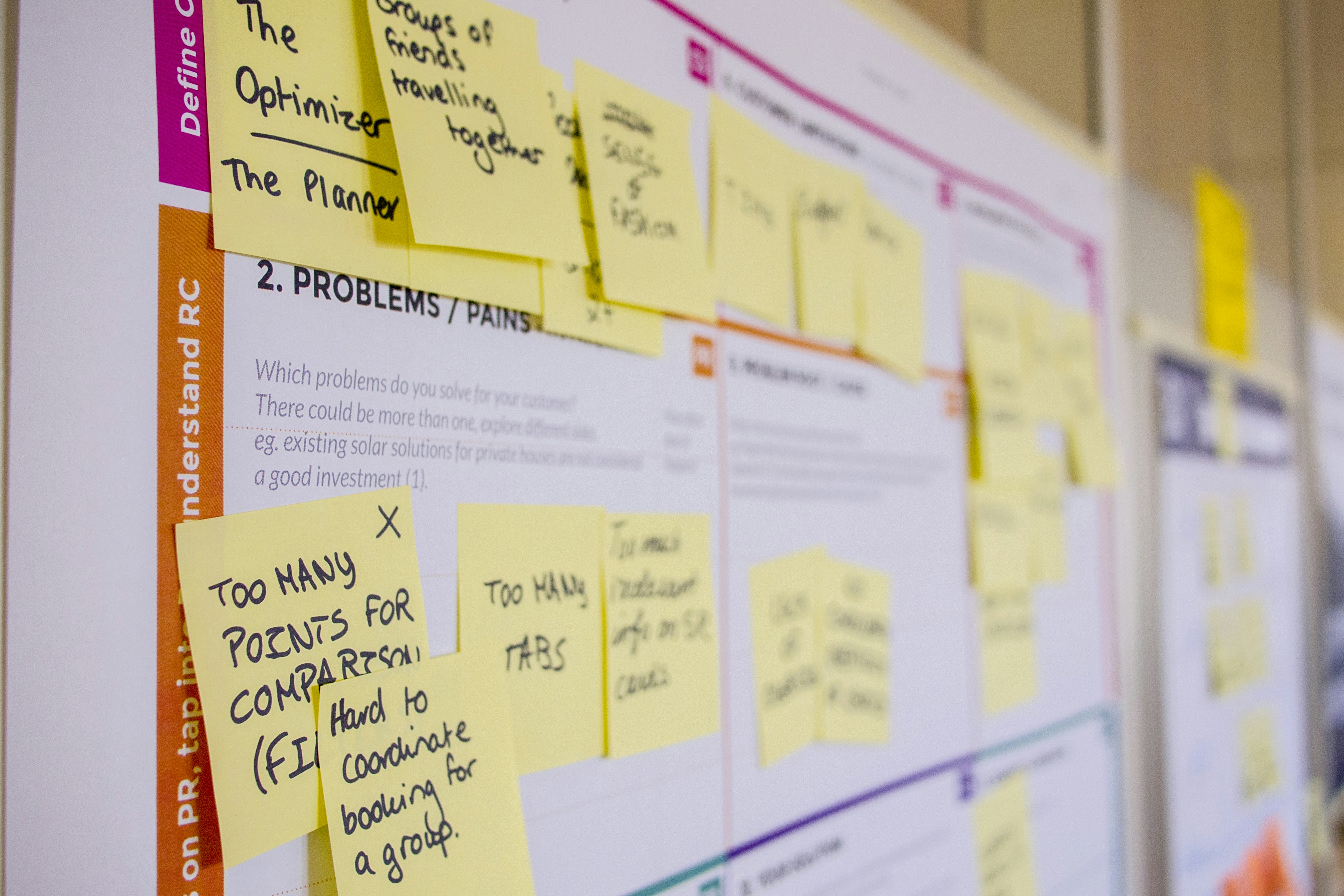A Complete Guide to Collaborative CRM: Key Features and Benefits

Let's talk about CRM, shall we? No, not the mysterious acronym you've heard thrown around in business meetings like it's some kind of magical potion. I'm talking about Collaborative CRM – the behind-the-scenes superhero of customer relationship management.
Before your eyes glaze over and you click away, let me promise you this: by the end of this post, you'll see Collaborative CRM as necessary and downright exciting.
Key takeaways
-
Boost customer satisfaction: Learn how Collaborative CRM can elevate customer interactions and enhance their overall experience.
-
Improve team productivity: Discover how streamlining communication and automating workflows can skyrocket your team's efficiency.
-
Make smarter decisions: Understand how centralizing customer data helps you make real-time, informed decisions that benefit your business.
Table of contents
- 1. What is collaborative CRM and why does It matter?
- 1.1 Definition of Collaborative Crm
- 1.2 Key benefits of using collaborative CRM
- 1.3 How collaborative CRM enhances customer relationship management
- 2. Key features of collaborative CRM software
- 2.1 Centralizing customer data
- 2.2 Streamlining communication channels
- 2.3 Automating Customer Interaction Workflows
- 3. Benefits of implementing collaborative CRM in your business
- 3.1 Improving Customer Satisfaction and Loyalty
- 3.2 Optimizing team productivity and collaboration
- 3.3 Enhancing real-time decision-making with unified customer information
- 4. Choosing the right collaborative CRM software for your business
- 4.1 Assessing key features necessary for your business goals
- 4.2 Evaluating collaborative CRM based on customer experience enhancement
- 4.3 Technical support and scalability considerations
- 5. Conclusion
What is collaborative CRM and why does it matter?
Definition of Collaborative Crm
Picture this: Collaborative CRM is like the ultimate backstage pass for your business. It’s a system that allows all your teams—sales, marketing, customer service—to collaborate and share information seamlessly.
Unlike other types of CRM, a collaborative CRM system focuses on ensuring everyone in your business has access to the same up-to-date customer information. No more lost or missed emails – everyone’s on the same page. Collaborative CRM benefits include document and file sharing that facilitate teamwork and accessible information among sales and customer service teams.
Key benefits of using collaborative CRM
The benefits of collaborative CRM are like discovering your favourite band’s secret album – a total game-changer. First, it streamlines communication channels, meaning all customer interactions are in one place. Need to know what was said in that last customer support call? Boom – it’s right there.
Next, it automates customer interaction workflows, so those repetitive tasks you dread? Gone. Poof. Collaborative CRM systems also contribute to customer retention by creating personalized experiences and tailored communication that drive customer loyalty.
Finally, it centralizes customer data, giving you a 360-degree view of your customers and helping you understand them better and faster.
How collaborative CRM enhances customer relationship management
Let’s talk about the magic it brings to customer relationship management. With collaborative CRM, your customer support team knows what marketing has promised, and your sales team knows what issues customer service has resolved.
This unified approach means your customers don’t have to repeat themselves, leading to improved customer satisfaction and loyalty. Collaborative CRM tools can streamline sales processes, enhance productivity, and ultimately lead to better customer experiences. Plus, with all that centralized data, you can make real-time decisions that enhance the overall customer experience.
Components of Collaborative CRM
Key Components of Collaborative CRM Systems
Think of Collaborative CRM systems as the ultimate toolkit for managing customer relationships. Each tool in this kit plays a crucial role in ensuring smooth and effective customer interaction management. Here are the key components:
-
Customer Interaction Channels: Imagine having a direct line to your customers, no matter where they are. This component allows you to manage customer interactions across multiple channels—be it phone, email, chat, or social media. It ensures that every customer interaction is captured and managed efficiently.
-
Communication Channels: Effective communication is the backbone of any successful business. This component ensures you can communicate with customers through their preferred channels, making every interaction personalized and effective. Whether it’s a quick chat or a detailed email, your communication is always on point.
-
Customer Data Management: Think of this as your treasure trove of customer insights. This component enables you to collect, store, and analyze customer data, providing valuable insights into customer behavior and preferences. With all this data at your fingertips, you can tailor your approach to meet each customer’s unique needs.
-
Workflow Automation: Say goodbye to repetitive tasks. This component automates various business processes, such as sales, marketing, and customer service. By reducing manual errors and improving efficiency, your team can focus on what truly matters—building strong customer relationships.
-
Analytics and Reporting: Knowledge is power, and this component gives you plenty of it. With real-time analytics and reporting, you can make data-driven decisions that enhance customer relationships. Whether it’s tracking customer satisfaction or measuring the success of a marketing campaign, you have the insights you need to succeed.
Types of CRM
Overview of CRM Types
CRM systems come in different flavors, each designed to meet specific business needs. Understanding these types can help you choose the right one for your business. Here’s a quick overview:
-
Operational CRM: Think of this as your business’s efficiency expert. Operational CRM focuses on automating and streamlining customer-facing processes, such as sales, marketing, and customer service. It ensures that every interaction is smooth and efficient, making it easier to manage customer relationships.
-
Analytical CRM: If data is your game, Analytical CRM is your best friend. This type of CRM analyzes customer data to provide valuable insights into customer behavior and preferences. By understanding what makes your customers tick, you can make informed decisions that enhance their experience.
-
Collaborative CRM: Collaboration is key, and this type of CRM makes it happen. Collaborative CRM enables businesses to work closely with customers, partners, and suppliers to improve customer relationships and satisfaction. It ensures that everyone is on the same page, leading to a more cohesive and effective approach.
-
Strategic CRM: Aligning customer relationship management with your overall business strategy is crucial, and that’s where Strategic CRM comes in. This type of CRM helps you make data-driven decisions that improve customer relationships and drive business success. It’s all about seeing the big picture and making strategic moves.
Key features of collaborative CRM software
Centralizing customer data
Imagine having all your customer data neatly organized in one place – it's like having the ultimate cheat sheet for understanding your customers. Collaborative CRM software centralizes all this information, making it easy to access and analyze. No more searching through endless spreadsheets or inboxes.
Everything you need is just a click away, helping you provide a personalized experience for each customer.
Streamlining communication channels
Effective communication is the heart of any successful business; collaborative CRM tools make it a breeze. By streamlining communication channels, you ensure that every customer interaction is logged and accessible.
Whether through chat tools, email, or phone calls, your team can easily track and manage all interactions, leading to better customer engagement and satisfaction.
Automating Customer Interaction Workflows
Nobody likes doing the same task over and over. That's where automation comes in. Collaborative CRM software can automate many customer interaction workflows, allowing your team time to focus on more strategic tasks.
From sending follow-up emails to updating customer records, automation handles the mundane so you can focus on what matters.
Benefits of implementing collaborative CRM in your business
Improving Customer Satisfaction and Loyalty
When customers feel heard and understood, their loyalty skyrockets. With a collaborative CRM system, you can ensure that every interaction is consistent and personalized.
This not only boosts customer satisfaction but also fosters long-term loyalty. Happy customers are loyal customers, and loyal customers are the backbone of any successful business.
Optimizing team productivity and collaboration
Think of collaborative CRM as the ultimate teamwork booster. By centralizing information and streamlining workflows, your team can work more efficiently and effectively.
No more silos or miscommunications – everyone has access to the same information and can collaborate seamlessly.
This optimized productivity means better customer service and a more cohesive team environment.
Enhancing real-time decision-making with unified customer information
In today's fast-paced business environment, real-time decision-making is crucial. Collaborative CRM gives you that edge by providing unified customer information at your fingertips.
Whether responding to a customer inquiry or planning a marketing campaign, having access to real-time data allows you to make informed decisions quickly and confidently.
Best Practices for Collaborative CRM
Tips for Successful Collaborative CRM Implementation
Implementing a collaborative CRM system is like setting the stage for a successful performance. Here are some best practices to ensure everything goes off without a hitch:
-
Define Business Objectives: Start with a clear vision. Define your business objectives and identify how collaborative CRM can help achieve them. Whether it’s improving customer satisfaction or streamlining communication channels, having clear goals will guide your implementation process.
-
Choose the Right CRM System: Not all CRM systems are created equal. Select a CRM system that meets your business needs and is scalable for future growth. Look for features that align with your objectives and can adapt as your business evolves.
-
Train Employees: Your team is the heart of your CRM system. Provide comprehensive training to ensure they understand how to use the system effectively. The more comfortable they are with the CRM, the more they can leverage its features to improve customer relationships.
-
Integrate with Existing Systems: Seamless integration is key. Ensure your CRM system integrates with existing systems, such as marketing automation and sales process management. This creates a unified approach, making it easier to manage customer interactions and data.
-
Monitor and Evaluate: Continuous improvement is the name of the game. Regularly monitor and evaluate the effectiveness of your CRM system. Make adjustments as needed to improve customer relationships and satisfaction. By staying proactive, you can ensure your CRM system continues to deliver value.
By following these best practices, you can set the stage for a successful collaborative CRM implementation, ensuring your business reaps the full benefits of this powerful tool.
Choosing the right collaborative CRM sofitware for your business
Assessing key features necessary for your business goals
Not all collaborative CRM software is created equal. To choose the right one, assess the key features that align with your business goals.
Do you need robust automation capabilities? Or perhaps seamless integration with your existing tools?
Make a list of your must-haves and nice-to-haves to narrow down your options.
Evaluating collaborative CRM based on customer experience enhancement
Your CRM should be a tool that enhances the customer experience. Look for features that allow for personalized interactions, efficient communication channels, and comprehensive data analysis.
The best CRM software will meet your business needs and elevate the overall customer experience.
Technical support and scalability considerations
Finally, the technical support and scalability of the CRM should be considered. As your business grows, your CRM should grow with you. Look for solutions that offer robust technical support and can scale according to your evolving needs.
This ensures that your investment in CRM software is future-proof and can adapt to your business's changing landscape.
Dive into our common mistakes to avoid in selecting CRM guide for insights on making the right choice.
Conclusion
In conclusion, Collaborative CRM isn't just another buzzword – it's a powerful tool that can transform your business.
By centralizing customer data, streamlining communication channels, and automating workflows, you can enhance customer satisfaction, optimize team productivity, and make smarter, real-time decisions.
So embrace the power of Collaborative CRM and watch your business thrive.
For more insights and personalized advice, schedule your free consultation with one of our friendly experts at Cyberlobe Technologies today and start transforming your customer relationships!










%20(1).jpg)